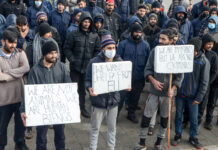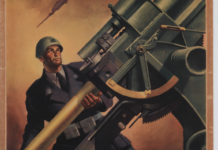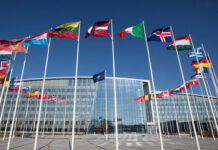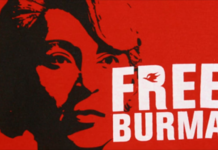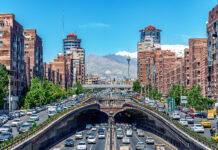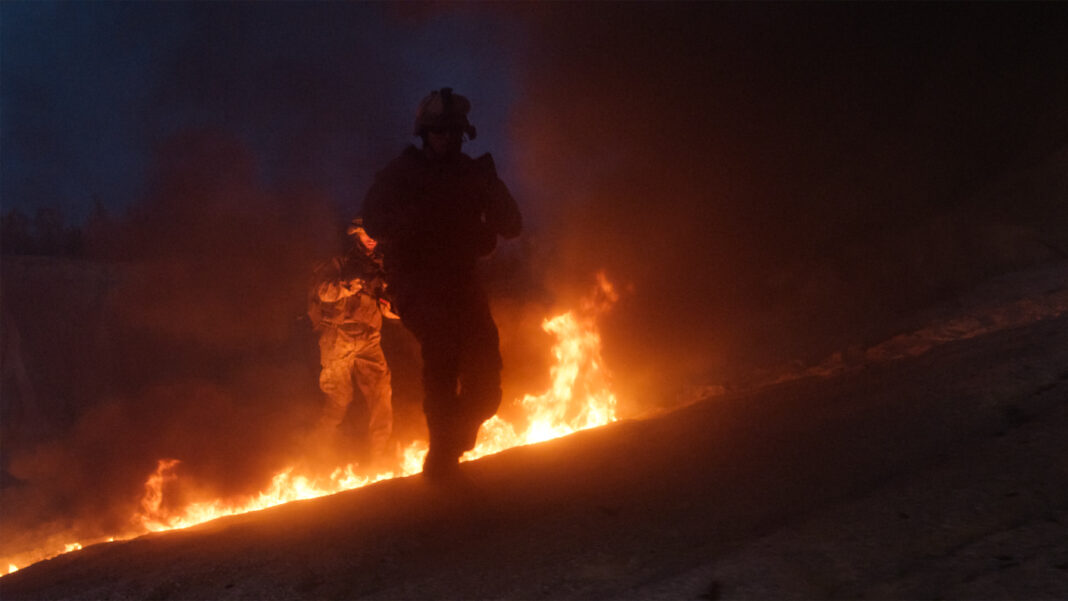by Mohammad Shamandafar (from Amman)
As direct consequence of the ongoing large-scale war in Palestine and Israel – to date, counting over 28,000 Palestinians and around 1,000 Israelis deaths – other Countries in the region have been dragged in the spiral of violence since October 7. In addition to Lebanon and Yemen, involved almost since the beginning between October and December, in the past month also in Jordan, Syria and Iraq experienced significant tensions. To understand the regional context key considerations of the internal and external historical dynamics inside each national context must be done.
US hit in Jordan. 28 January, a drone attack hit an isolated US outpost along Jordan’s border with Syria and Iraq, known as Tower 22. The attack, orchestrated by the Islamic Resistance in Iraq, with its prominent member Kata’ib Hezbollah, heavily connected to Iran, marked the first lethal strike against US facilities since October 7. And the fact that the unknown Tower 22 was suddenly all over the world news did not play in favour of the Jordan Government, finding itself in a controversial position towards the Palestine-Israel conflict.
On one side, with its head of State, king Abdullah II, Amman has been very vocal at diplomatic level against Israel for its disproportionate response to the Hamas attacks. Such efforts aimed at taking a clear stance towards not only with the Palestinian population of Gaza and the West Bank, but with its own, made for over 60% by citizens of Palestinian origin. Unsurprisingly, Jordan has experienced one of the largest popular solidarity demonstrations across all the country. However, when those were not overly controlled by the intelligence apparatus, they were heavily repressed, particularly when they occurred at the Israeli and American embassies. Such protests represented the peak of a growing popular frustration with Jordan’s foreign policy, tied to Israel since the birth of the latter and later on US, supporting Amman yearly with around 3,8 Billions USD of foreign aid. Since October 7, pro-Palestinian campaigns calling for the boycott of US brands have gained traction, further straining the Country’s relationship with the US.
It came then as no surprise if the attack at the Tower 22, putting again at the center the over 3,000 US troops in Jordan, sparked another wave of general anger in the Kingdom. Since that outpost is part of hundreds-millions dollars’ US surveillance program to help Amman and Israel to stem infiltration by militants from Syria and Iraq, the attack shed light on another contentious aspects of Jordan policy. Formally in peace with Tel Aviv only since 1994, the long-term relations between the two states date since 1948, when Amman realized the need to balance between the natural Arab connection with Palestinians and the necessity to deal with an unwanted but more powerful neighbour.
Additionally, reports that the United Arab Emirates (UAE) is transporting goods to Israel via Jordan have caused more anger among Jordanians. Despite the non-confirmation of the reports by the Prime Minister Bisher Khasawneh (apparently, the UAE-Israel-Jordan corridor has been active long before October 7), dozens of protesters gathered in the capital demanding an end to what they called “the Zionist land bridge”. With a tourism-led economy also negatively affected by the neighbouring war in the background, all such social grievances do not certainly represent a positive sign for one of the few “stable” Countries in the region.
Tower 22’s consequences in Iraq and Syria. To the three US troops killed and the dozens wounded at the Tower 22 attack, US responded with airstrikes hitting over 85 Iran-backed targets in Syria and Iraq. The strikes also killed 45 civilians, according to Baghdad and Damascus officials, who both accused Washington to “push the region in the brink of the abyss”.
In Iraq, the attacks came at a time when the US military presence is critically questioned. As highlighted by a high-ranked military official, the US army on the Iraqi soil has become a “factor for instability”. The comments were made in response to the killing of Wissam Mohammed “Abu Bakr” al-Saadi, the commander in charge of the pro-Iran Kataib Hezbollah, and most likely the mastermind behind the Tower 22 attack. If such anger may appear to be shared across the Iraqi society – with a State-wide mourning to honour the civilian victims and a parliament session calling for the immediate ousting of US forces and halting the sale of oil to Jordan, accused to help with Washington on such attacks – the political reality in Iraq is way more complex.
For the Kurdistan Regional Government (KRI) in the north, the problem instead is the Sudani’s administration ineffectual action against outlawed pro-Iranian groups. Not long before, in mid-January, the KRI accused the central Government for not having done enough to prevent a direct attack by the Iran’s Revolutionary Guard Corps in the Iraqi-Kurdish capital, Erbil. Interestingly, that attack created quite an embarrassment for both sides, especially when Iran claimed that the strike was targeting the “Israeli intelligence” base in Iraq, thus revealing the controversial relations that the regional Government has long had with Tel Aviv. Broadening the view, these dynamics fall in the general context of instability in Iraq. Between an ongoing currency devaluation, the continuous attacks from Turkey in the KRI targeting the Turkish-Kurdish PKK (a rival of the Iraqi-Kurdish PDK, leading the Erbil government) and ever-growing environmental crisis already provoking people’s displacement within the Country, the situation looks already variable with no need for additional pressures.
As the over 900 US troops in Iraq are deployed at the invitation of Baghdad following the rise of the Islamic State (IS) in 2014, the circa 2,500 in Syria are instead in areas outside Government control. By no surprise then in the aftermath of the US retaliations came the condemnation by a Syrian military commander, stating that the “American military occupation cannot persist”. However, nothing else followed since. While last May the president Bashar Al Assad has been rehabilitated by various international platforms despite a 12 years-long war provoking over half a millions of civilian deaths and more than 22 millions of people displaced, the Country has yet not started any significant attempt of reconstruction, at social and infrastructural level.
In August 2023, furthermore, some popular demonstrations restarted against Bashar’s rule. In this framework, as the US presence in East Syria is functional to the support of the kurdish-led Syrian Defence Forces (SDF), who played a fundamental role to defeat the Islamic State of Iraq and the Levant (ISIL) while setting an autonomous rule there but still targeted by regular attacks from Turkey, Damascus may have its reasons not to be so vocal. Such unrest in that area may bring in fact a stronger presence by Iran, a powerful ally who could then be a way to regain territory. Eventually, despite official claims to limit the attacks and their retaliations, the current fragile equilibrium in the Middle East may not hold as tensions continue to escalate.
On the cover photo, group of armed soldiers running through fire ©Gorodenkoff/Shutterstock.com



